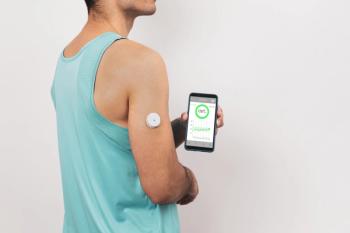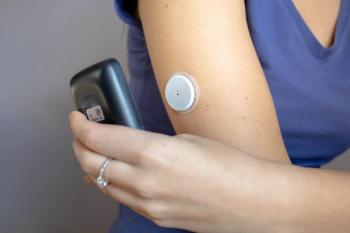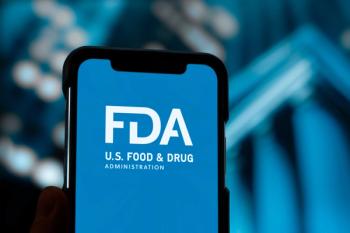
Telehealth Model, CGM Use Supports T1D, T2D Self-Management
There has been growing evidence around the potential for the success of remote diabetes care and CGM technology use.
A comprehensive care model, inclusive of telehealth-delivered diabetes care with continuous glucose monitor (CGM) use can improve patient outcomes in type 1 and type 2 diabetes, according to research results published in JAMA Network Open.1
There has been growing evidence around the potential for the success of remote diabetes care and CGM technology use. Therefore, researchers sought to evaluate a model that could “minimize adoption-limiting factors” such as geography and access to specialty care” for adults with type 1 or type 2 diabetes.
Between August 24, 2020 and May 26, 2022, researchers conducted the Virtual Diabetes Specialty Clinic (VDiSC) study to evaluate efficacy and feasibility around establishing a virtual endocrinology clinic for comprehensive diabetes care. Participants were recruited through CVS Health Clincial Trial Services, as well as through primary care and endocrinology clinic referrals. Eligible adults had type 1 or type 2 diabetes and used either an insulin pump or multiple daily injections of insulin.
Enrolled participants not currently using a CGM completed an initial study phase with a blinded Dexcom G6 pro CGM to collect baseline data. During the 26-week follow-up period, participants received unblinded Dexcom G6 sensors. Participants completed 3 remote training schedules that covered CGM initiation, the use of data visualization tools, and individualized CGM use.
The primary efficacy outcome was CGM use; CGM metrics for hypoglycemia (<54 mg/dL and <70 mg/dL), hyperglycemia (>180 mg/dL and >250 mg/dL), and time in range for 70 mg/dL to 180 mg/dL; mean glucose level and glycemic variability; HbA1c value; and participant-reported outcomes.
A total of 234 participants were included in the study analyses, 160 of whom had T1D (T2D n=74). Mean participant age was 47±14 years, 53% were women, and median duration of diabetes was 20 years.
In the type 1 diabetes cohort, mean participant age was 44±14 years (58% women) with a median diabetes duration of 23 years. Forty-five percent of participants used an insulin pump, 55% used multiple daily injections, and 29% were already using a CGM at the time of study enrollment.
Median CGM use over 6 months was 96% (interquartile range [IQR], 91%-98%), consistent between both 3-month follow-up periods. This was consistent among both prior and non-CGM users. Mean HbA1c decreased from 7.8% at baseline to 7.1% at month 3 and 7.1% at month 6 (mean change from baseline to 6 months, -0.6%). Mean time in range increased from 50% at baseline to 61% at 6 months (mean change, 11%). Other CGM metrics indicative of hyperglycemia had similar improvements.
After 3 the planned training sessions, the median number of additional follow-up contacts was 8 per participant (IQR, 6-10). This contact included video training sessions, telephone calls, texts, or emails (80%, 9%, 6%, and 5%, respectively).
On the 6-month questionnaire, nearly all participants reported that using a CGM helped them manage their diabetes better. Most strongly agreed or agreed that working with the virtual endocrinology clinic led to better diabetes management. Participant-reported outcomes demonstrated a decrease in the Diabetes Distress Scale score (mean change from baseline, -0.3) as well as a reduction in score on the Hypoglycemia Fear Survey worry subscale (mean change from baseline, -2.9).
Participants in the type 2 diabetes cohort had a mean age of 55±12 years (42% women) with a median diabetes duration of 19 years. At enrollment, 73 participants in this group used multiple daily insulin injections; none were using CGMs.
Median CGM use over 6 months was 94%, which was consistent between the 3-month periods. Mean HbA1c decreased from 8.1% to 7.1% from baseline to 3 months, and was 7.1% at 6 months (mean change from baseline to 6 months, -1.0%). Mean time in range was 48% at baseline and 66% at follow-up, with a mean change of 18%. Mean glucose was 199 mg/dL at baseline and 166 mg/dL at follow-up, with a mean change of -33 mg/dL.
Median number of follow-up contacts was 8 (IQR, 6-11); these contacts included video training sessions, telephone calls, emails, and texts in 74%, 13%, 8%, and 5% of participants, respectively.
All participants who responded to the 6-month questionnaire felt that CGM use helped them manage their diabetes; 85% and 15% strongly agreed or agreed that working with the virtual clinic helped their diabetes management. Like in the type 1 diabetes group, both the Diabetes Distress Scale score and the Hypoglycemia Fear Survey worry subscale decreased during the study period.
Study limitations include the racial makeup of the cohort, which was predominantly White, and the high rate of private insurance coverage, limiting generalizability to individuals of other races and those with decreased access to care.
“Results…demonstrated clinical benefits associated with implementation of a comprehensive care model that included diabetes education,” the researchers concluded. “This model of care has potential to reach a large portion of patients with diabetes, facilitate diabetes technology adoption, and improve glucose control.”
Reference
1. Aleppo G, Gal RL, Raghinaru D, et al. Comprehensive telehealth model to support diabetes self-management. JAMA Netw Open. 2023;6(10):e2336876. doi:10.1001/jamanetworkopen.2023.36876
Newsletter
Pharmacy practice is always changing. Stay ahead of the curve with the Drug Topics newsletter and get the latest drug information, industry trends, and patient care tips.





























































































































